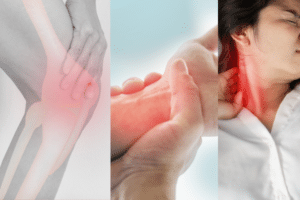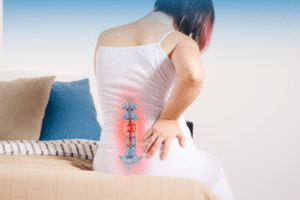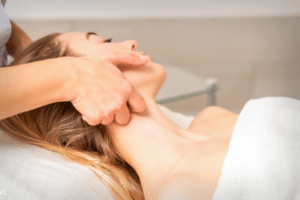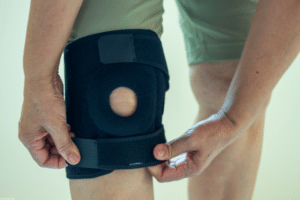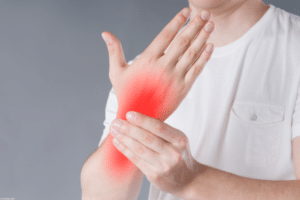Introduction to Concussions:
A concussion is a type of mild traumatic brain injury (mTBI) that occurs when there’s a jolt or blow to the head. This impact can harm brain tissue and disrupt the normal chemical balance within the brain

Image Source: Mayfieldclinic
"There were approximately 214,110 TBI-related hospitalizations in 2020* and 69,473 TBI-related deaths in 2021."
Centre for Disease Control & Prevention Tweet
Source: cdc.gov
In this article, we’ll explore the latest facts and figures related to concussions, delve into their signs and symptoms, discuss the diagnostic process, and shed light on how Physio Pros, located in Oakville, Canada, can play a pivotal role in concussion recovery.
Keep in Mind!
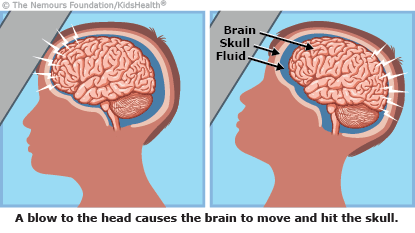
“Concussion symptoms may not show up right away. They can appear 1 to 3 days after an injury. Kids and adults often have similar physical symptoms, but children may show cognitive and emotional signs later. Teens often have sleep issues. While most kids recover quickly, some symptoms like memory problems, headaches, and trouble concentrating may last for weeks or months. It’s crucial to watch for these signs and contact a doctor if they persist.” Source
Latest Facts and Figures on Concussions
Concussions are a common occurrence, especially among athletes and individuals engaged in physically demanding activities. According to WHO’s recent report, it is estimated that approximately 10 million people worldwide suffer from concussions annually. These injuries can have long-lasting effects, making it essential to understand them better and explore effective recovery options.
Causes of Concussions
- Sports Injuries: Concussions frequently occur in contact sports like football, soccer, hockey, and rugby, where collisions and falls are common.
- Motor Vehicle Accidents: Car accidents, motorcycle accidents, and pedestrian accidents can all lead to head injuries and concussions, particularly if there is a collision or sudden deceleration.
- Falls: Falls, especially among children and the elderly, are a common cause of concussions. Falls from heights, slipping, or tripping can result in head injuries.
- Assaults: Physical altercations, assaults, or incidents of violence where the head is struck can cause concussions.
- Bicycle Accidents: Falling off a bicycle, especially without a helmet, can result in head injuries and concussions.
- Recreational Activities: Activities like skiing, snowboarding, skateboarding, or horseback riding can lead to concussions if there is a fall or collision.
- Shaken Baby Syndrome: Infants and young children are vulnerable to concussions when they are shaken violently, causing their brains to impact the skull.
- Explosions or Blast Injuries: Military personnel and individuals near explosions can suffer from blast-related concussions due to the shockwaves affecting the brain.
- Workplace Injuries: In certain industries, workplace accidents, especially those involving falls from heights or being struck by objects, can lead to concussions.
- Repetitive Head Trauma: Athletes in contact sports, as well as individuals in professions where repeated head impacts occur (e.g., boxing, wrestling), are at risk of developing a condition known as chronic traumatic encephalopathy (CTE) due to cumulative concussions.
Signs and Symptoms of Concussions
Concussions are often referred to as “invisible injuries” because they may not always present visible physical symptoms. However, they can have a profound impact on an individual’s overall well-being. Some common signs and symptoms of concussions include:
- Headache: A persistent or severe headache is a common symptom of a concussion.
- Dizziness: Individuals with concussions often experience dizziness or a feeling of unsteadiness.
- Nausea and Vomiting: Nausea and vomiting may occur shortly after the injury or even days later.
- Confusion: Concussed individuals may appear confused, have difficulty concentrating, or be unable to recall events.
- Memory Problems: Short-term memory problems are common, and individuals may forget events surrounding the injury.
- Sensitivity to Light and Noise: Many people with concussions become sensitive to light and noise.
- Mood Changes: Mood swings, irritability, and increased emotional sensitivity can occur.
- Sleep Disturbances: Concussions often lead to sleep disturbances, including insomnia or excessive sleepiness.
How to Diagnose Concussions
Diagnosing concussions requires a comprehensive evaluation by a healthcare professional. Physicians, including neurologists and sports medicine specialists, use a combination of clinical assessments and tools to diagnose concussions. These may include:
- Clinical Interview: The healthcare provider will ask about the circumstances of the injury, symptoms, and medical history.
- Neurological Examination: A thorough neurological examination is conducted to assess reflexes, coordination, and cognitive function.
- Imaging: In some cases, imaging tests such as CT scans or MRIs may be performed to rule out more severe brain injuries.
- Cognitive Testing: Specialized cognitive tests may be administered to assess memory, attention, and reaction time.
How Physio Pros Oakville Can Help?
Physiotherapy plays a crucial role in the recovery process for individuals with concussions. At Physio Pros Oakville, we understand the unique challenges and requirements of concussion recovery. Our team of experienced physiotherapists employs evidence-based techniques and personalized treatment plans to assist you on your journey to recovery.
Our comprehensive approach to concussion management includes:
Assessment and Individualized Treatment Plans: We conduct a thorough assessment to understand your specific symptoms and needs. Based on this assessment, we create personalized treatment plans that focus on your unique requirements.
Symptom Management: We work with you to manage and alleviate symptoms such as headaches, dizziness, and neck pain through targeted physiotherapy techniques.
Balance and Vestibular Rehabilitation: Many concussed individuals experience balance and vestibular issues. Our physiotherapists employ specialized exercises to improve balance and reduce dizziness.
Cervical Spine Rehabilitation: Neck injuries often accompany concussions. Our team is skilled in addressing cervical spine issues, reducing pain, and improving mobility.
Education and Return-to-Activity Guidance: We provide education on symptom management and guide you through the return-to-activity process, ensuring a safe and gradual transition back to your normal routine.
Collaboration with Healthcare Professionals: We collaborate closely with other healthcare providers, including neurologists and sports medicine specialists, to ensure a comprehensive and integrated approach to your recovery.
Conclusion
In conclusion, concussions are a significant health concern with far-reaching consequences. Understanding the signs, symptoms, and diagnostic process is crucial for timely intervention and recovery. Physio Pros Oakville stands ready to assist you on your journey to recovery, providing personalized and evidence-based physiotherapy to help you regain your health and well-being.

